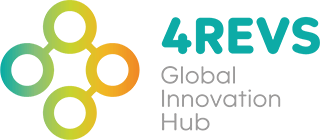4Revsピックアップ
2022年5月6日
循環型建築のためのツールキット

【主な要点】
1. 国際的な建築・エンジニアリングコンサルティング会社であるアラップ(Arup)は、英国のエレン・マッカーサー財団と共同で、デベロッパーや建築デザイナーが不動産プロジェクトに循環型経済の原則を適用するのに役立つツールキットを公表した。
2. このツールキットは、「(建築物を)作らない、長期的な価値のために作る、効率的に作る、正しい材料で作る」というフレームワークを採用し、デザイナーやプランナーが新しいプロジェクトの最初の段階で循環型経済の原則を埋め込めるよう、戦略や詳細なアクションに分解して説明している。このツールは、世界中の循環型プロジェクトからの実践的な学習によって継続的に更新される予定である。
3. このツールキットでは、最近のプロジェクトのケーススタディも紹介している―シドニーでの材料パスポートの使用、オランダでの仮設建築物における一時的に借用した建築材料、ソウルでのモジュラー照明システム、ロンドンでのプレハブ木材構造など。
【補足説明】
建物、道路、インフラなど、私たちの身の回りにある人間が作り出したもので構成される建築環境は、毎年、世界中で採取される材料のほぼ半分を使用しており、温室効果ガス排出の大きな要因になっています。
循環型経済では、鉄鋼、アルミニウム、セメント、プラスチックの需要を減らすことで、2050年に建材による世界のCO2排出量を38%削減することができます。また、サプライチェーンの混乱や原材料の価格変動に対して、より強靭なセクターとなる可能性もあります。
新しい技術や革新的なビジネスモデルを用いて建築環境を設計する方法を見直すことで、既存の資産からより多くの価値を引き出し、資源や建築材料を経済的に維持し、その価値を保持し、廃棄物になるのを防ぐことができます。
参考リンク:
https://ce-toolkit.dhub.arup.com/
(自動翻訳ソフトDeepLを使って、原文を自動翻訳しています)
May 6, 2022
Toolkit for Circular Building
【Main points】
1. International consulting firm Arup, in collaboration with UK-based Ellen MacArthur Foundation, has launched a toolkit aimed to help developers and building designers apply circular economy principles in real estate projects.
2. The toolkit adopts a high-level framework – build nothing, build for long term value, build efficiently, and build with the right materials – which breaks down into strategies and detailed actions so that designers and planners can embed circular economy principles into the very beginning of new projects. The tool will be continuously updated with practical learnings from circular projects around the world.
3. The toolkit also introduces case studies from recent projects, including: the use of material passports in Sydney, hired building materials in a temporary structure in the Netherlands, a modular lighting system in Seoul, and prefabricated timber structures in London.
【Text】
Our built environment – made up of the buildings, roads, infrastructure, and other human-made features of our surroundings – uses almost half the materials extracted globally every year and is a significant contributor to greenhouse gas emissions.
A circular economy could reduce global CO2 emissions from building materials by 38% in 2050, by reducing demand for steel, aluminium, cement, and plastic. It could also make the sector more resilient to supply chain disruptions and price volatility of raw materials.
By rethinking the way we design our built environment, using new technologies and innovative business models, we can realise more value from existing assets, while keeping resources and building materials in the economy, holding onto their value, and stopping them from becoming waste.
Arup has launched a Circular Buildings Toolkit, in collaboration with the Ellen MacArthur Foundation, to help designers and planners create a better future for the built environment sector.
Link:
https://ce-toolkit.dhub.arup.com/
最新のピックアップ
-
2024年3月8日
Mar 8, 2024
lithium battery; energy transition; recycling; closed loop

-
2024年3月6日
Mar 6, 2024
Tomato Jos: Investment & Impact into Nigeria’s Tomato Industry

-
2024年3月4日
Mar 4, 2024
ネイチャー・ポジティブに資する 投資は、世界全体のわずか 3%に過ぎない
Only 3 per cent of global investments are nature- positive

-
2024年2月3日
Feb 3, 2024
Towards sustainable regenerative food systems

-
2024年1月4日
Jan 4, 2024
Climate adaptation – 150 options for water in agriculture

